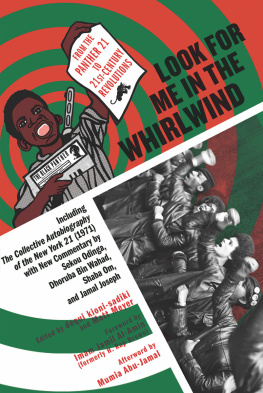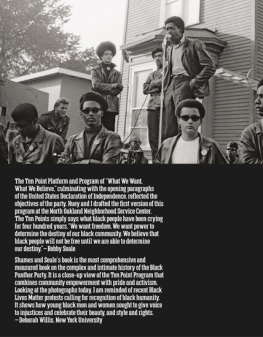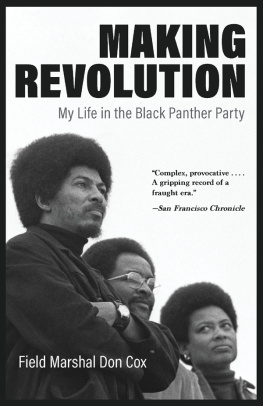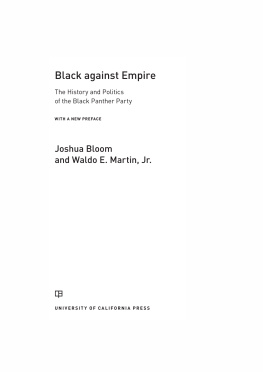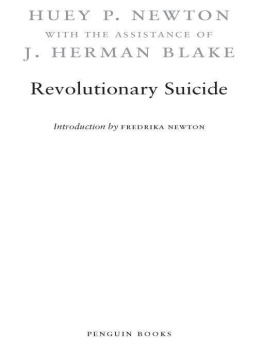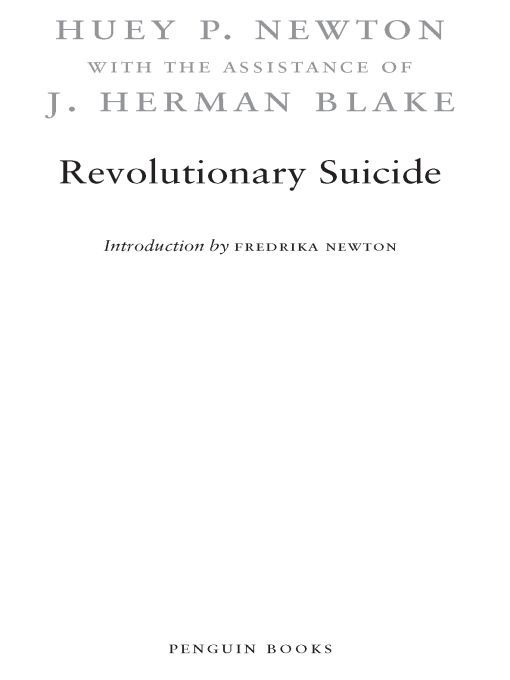Table of Contents
REVOLUTIONARY SUICIDE
HUEY P. NEWTON was born in Monroe, Louisiana, on February 17, 1942, to Walter and Armelia Newton. He is the cofounder of the revolutionary Marxist-Leninist organization the Black Panther Party, and was the Partys ranking leader and chief ideologue and strategist. In 1966, Newton enrolled in Merritt College in Oakland, where he became a member of the Phi Beta Sigma fraternity, led the effort to establish the first black history course, and met Bobby Seale. In October 1966, Newton and Seale founded what was then known as the Black Panther Party for Self-Defense. The Party urged members to challenge the status quo with armed patrols of the impoverished streets of black Oakland, and to form coalitions with organizations representing other oppressed groups. Internationally, Newton directed the Party to form coalitions with the Vietnamese, Chinese, and Cubans, as with, among others, African national liberation organizations like FRELIMO in Mozambique, ZANU in Zimbabwe, and the ANC in South Africa.
Within one year of the Partys founding, in October 1967, Newton was wounded and arrested by Oakland police and charged with the murder of a police officer, spawning the worldwide protest that came to be known as the Free Huey Movement. Convicted of manslaughter, Newton was released in July 1970 for a new trial. He would be tried on this charge several times thereafter but never convicted. Upon his release, he led the Partys more than forty chapters to build up its community service programs, called Survival Programs, operating under the slogan Survival Pending Revolution.
From the outset, the Party was a target for elimination by the U.S. government under the FBIs infamous COINTELPRO (counterintelligence) program, which openly stated that its agenda was to disrupt or destroy the Party. By 1981 the Party had been driven into its demise. In the aftermath, Newton earned a Ph.D. from the University of California, Santa Cruz, publishing his dissertation War Against the Panthers: A Study of Repression in the United States. Prior to that, Newton had authored Revolutionary Suicide and To Die for the People, in addition to numerous other treatises and articles, and was the coauthor with psychoanalyst Erik Erikson of the book In Search of Common Ground. On August 22, 1989, Newton was tragically shot to death on the blighted streets of West Oakland, leaving behind his widow, Fredrika Newton.
FREDRIKA NEWTON was raised in Berkeley, California, by her mother, Arlene Slaughter. She attended Wesleyan University, where she earned her B.A. Prior to that, in 1969, as a young teenager, Mrs. Newton joined the Black Panther Party, and in 1970 she met Huey P. Newton. In 1984, after the demise of the Party, they married. In the wake of Huey P. Newtons death in 1989, Fredrika Newton, along with former Black Panther leader David Hilliard, established the Dr. Huey P. Newton Foundation, a nonprofit educational corporation. She continues to serve as the foundations president, and oversees its archive, materials publications, and other activities, including a number of community-based programs.
For my mother and father, who have given me strength and made me unafraid of death and therefore unafraid of life
Introduction
It has been twenty years since my late husband, Huey P. Newton, was shot and killed on the same streets of Oakland, California, that had witnessed his dramatic ascent as leader of the Black Panther Party two decades earlier. From 1966 when the Party was founded to its demise around 1980, Huey stood at the vanguard of the Black Liberation Movement. For most people then and now this legendary role is best personified in a photograph taken at the behest of Eldridge Cleaver, who sought to make a militant public statement about the Party and its leader. In the picture, Huey is seated in a tall wicker chair and looking defiantly at the camera, a rifle held in his right hand and a spear in his left. Eldridges intended message was a symbolic bridging of the spear and the gun, or, put another way, the transference of the cultural nationalism of the past to a revolutionary culture in the future. This volatile image resonated deeply in an era marked by scores of riots and rebellions in black communities across the country. Later, when the photograph appeared on the cover of Revolutionary Suicide, the image of Huey as the intrepid African American freedom fighter was further cemented in the publics consciousness. As with all controversial figures, however, there were complicated and unseen dimensions beneath the famous public persona, which his autobiography makes abundantly clear.
When Revolutionary Suicide was first published in 1973, readers were offered a rare glimpse into the private life of the Partys founder. Not that people hadnt been reading and hearing all about Huey for years. He started making local headlines when he and Bobby Seale launched the Black Panther Party in Oakland. Their armed self-defense patrols of the police caused an immediate stir in the press; so much so that a conservative state assemblyman introduced legislation the following year that proposed outlawing the Partys constitutional right to bear arms. One can imagine the alarm felt in Sacramento when a caravan of Black Panthers with rifles appeared on the steps of the State Capitol to protest the Panther Bill. As with the police patrols, this demonstration was performed in full accordance with the law. Huey was a dedicated student of the California penal code and made certain the Partys actions were legal. People today often dont realize that walking down the street with a rifle was within the laws of the time. White racist militia groups like the Minutemen and the John Birch Society, for example, had in fact been driving through our communities with guns displayed for some time. Although these groups were better armed than the Black Panthers, the ruling establishment did not perceive whites with guns to be a threat to their interests and no attempt was made to curtail their activities. Once the Panther Bill was finally passed in the spring of 1967, Huey brought an end to the open display of firearms. Nevertheless, guns would continue to be closely associated with himwhether he chose them to be or not.
This association reached new heights that fall when Huey was charged with shooting and killing an Oakland police officer. He had been stopped in his car early one morning while looking for parking. Most local officers knew Huey by sight, making police harassment a routine procedure for him. Without asking for identification, the officer identified Huey by name, going so far as to ridicule him as the great, great Huey P. Newton. He then ordered Huey from the car and proceeded to knock him to the ground with an unexpected blow to the face. Shots were fired and the officer dropped over dead. Huey maintained that he was innocent, insisting that an unknown gunman had fired the shots. To the city fathers this was an open-and-shut case of murder; the most famous black American revolutionary since Malcolm X had acted out his rage against the police. For the black masses and the white New Left, however, the charge became a cause clbre. The movement to Free Huey coalesced overnight with hundreds of supporters taking to the streets to protest his innocence. Meanwhile, journalists from around the United States and abroad descended on Oakland to report on the sensational trial, providing the Black Panthers for the first time with not only a national but also an international stage. Millions of people who had been fed the establishments slander against the Party since its inception were now given the opportunity to meet its well-spoken leader and listen to its platform laid out by him. This exposure led to a rapid period of growth for the Black Panthers over the next two yearsso much so that when Huey was acquitted and released from prison in 1971, he barely recognized the Party or its members. What once had been a local phenomenon of a dozen comrades now counted more than forty chapters throughout the United States as well as those in Australia, Polynesia, England, India, Israel, and Algeria, where our International Section was headquartered.


